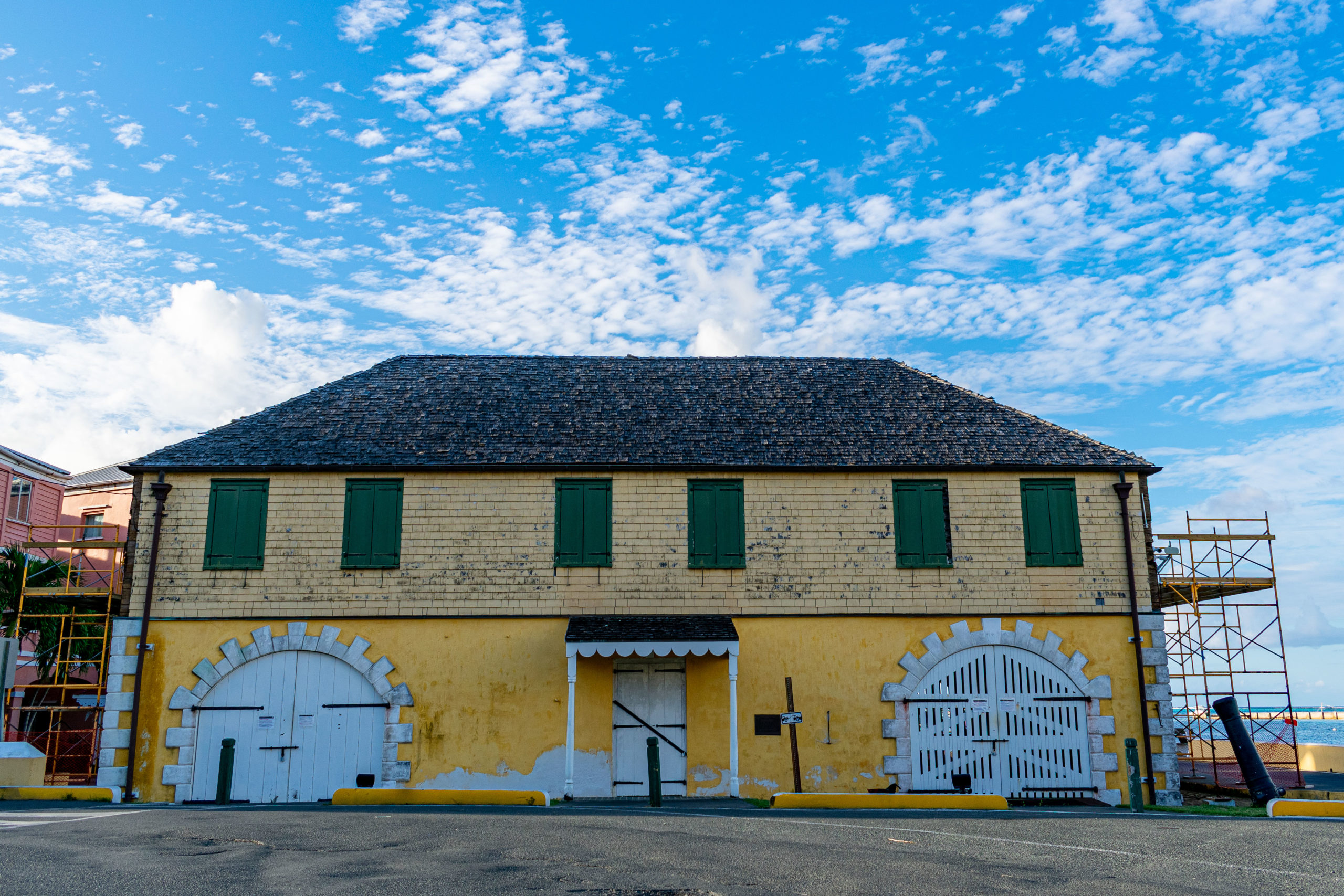Weighing the Past at The Scale House, Christiansted National Historic Site
History always weighs heavy, but perhaps at no time more so than right now. Across the Caribbean, the United States, Europe, and elsewhere, a growing conscious awakening to the horrors and inequities of our shared racial history has caused many to reconsider long-celebrated attractions recalling slavery, those who perpetuated it, and enduring symbols of colonialism and repression. Statues and monuments honoring mass murderers like Columbus, slave owners, Confederate traitors, and promulgators of white supremacy are being removed or destroyed all over the world. For some, this calls to question colonial-era buildings like The Scale House in Christiansted, St. Croix.
Gateway for Goods Into/Out of St. Croix
The Scale House sits on the wharf in downtown Christiansted. It is one of five primary historical structures comprising the Christiansted National Historic Site. The two-story building dates back to 1856, making it the newest of the five. It replaced an earlier weighing house constructed of wood in 1840.
True to its name, The Scale House was where all goods exiting Christiansted Harbor were weighed and taxed. Saint Croix’s export crops –sugar, molasses, rum, and cotton – all passed through here on their way to Europe and America.
Slaves produced all of these crops, of course. Fully disenfranchised black workers continued what effectively remained forced labor well after Emancipation in 1848 as well.
Christiansted’s imports were also inspected at The Scale House. Those imports, however, did not include the tens of thousands of African men and women forcibly brought to St. Croix. Their inspections were performed as part of slave auctions held a mere stone’s throw from The Scale House in the yard of The Danish West India and Guinea Company Warehouse.
In As The Statues Fall: A Conversation On Monuments And The Power of Memory, my friend and celebrated Crucian artist, La Vaughn Belle, noted a painful truth shared among West Indians:
We live in the remnants of forced labor camps.
Whither Colonial-era Buildings Like The Scale House
So, what’s the solution: Tear it all down? Another Fire Burn? Erase the ugly parts of our history entirely and hope that some sort of new, solely forward-looking utopia emerges?
None of this is realistic, of course.
(Hope is not a strategy.)
To me, it’s not even palatable.
History inspires a lot of my travel. The preservation and presentation of history really matters. The Scale House, and all of The Christiansted National Historic Site, informs and lend factual, historical context to Danish Colonial St. Croix. Information signs and displays paint a picture of what life was like in Christiansted, though there’s room for improvement.
The unique history of the Afro-Crucian master craftsmen and builders who constructed much of Christiansted is ignored, for instance. The plight of African slaves in St. Croix, and in particular the injustices they endured working along the wharf, could be highlighted a bit more in my opinion as well.
Still, there’s nothing here that lionizes or exalts in the evils of the past. This, sadly, is just what you’ll find at various Confederate attractions across the United States. There are also no outward and enduring symbols of oppression effectively hiding in plain sight here as existed until just a few weeks ago in Fredericksburg, Virginia.
In this way, The Scale House provides a look back at history that on balance is worth improving, preserving, and experiencing.
